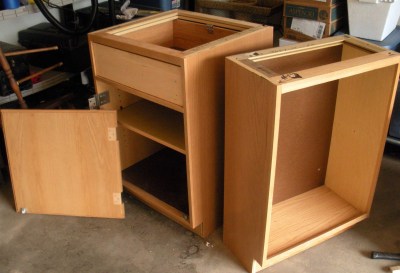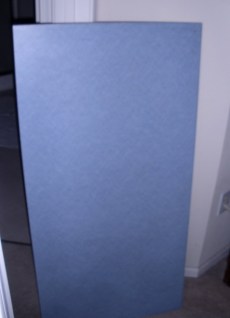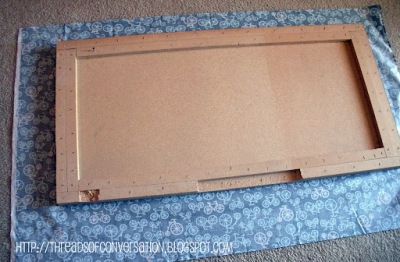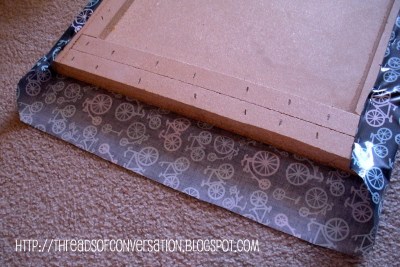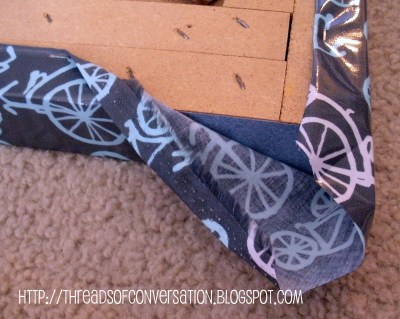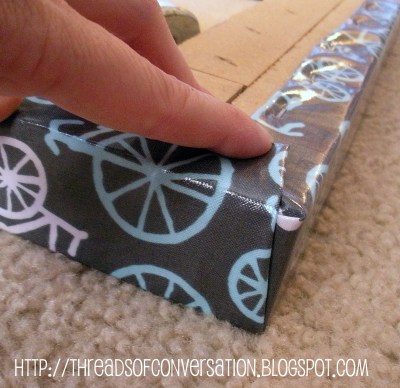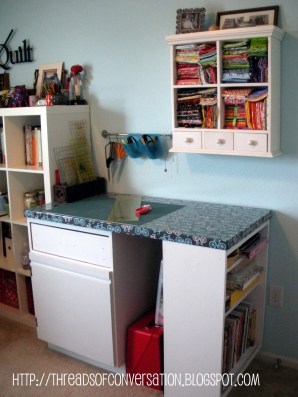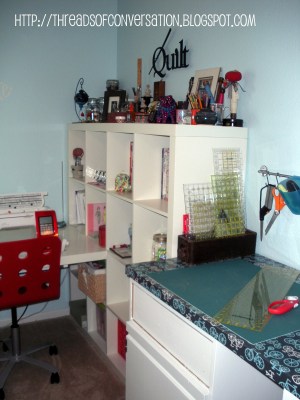I’ve been looking forward to writing this post for a while… with a move to a new home comes a new sewing space (!!), and my sweetie can attest that with every house we looked at, one of the primary considerations for both of us was what space would become my studio space and how functional would it be? (He’s well conditioned to being the spouse of a quilter and an artist) 😉
Coming from a small, third-floor walk-up, north-facing, condo apartment with very few windows, natural light was a major plus in the house we ended up buying! The home is 97 years old, not always cared for in the way it should have been, but it was built. like. a. rock. I kid you not, barring fire or Mother Nature intervening, this place will be standing long after the “constructed in 2003 condo” we moved out of. Here are a few “before” pics of the room I chose for my studio (a solarium off the entry foyer and across from our living room) with two french doors to close it off:
- The prior, ill-fitting curtains didn’t really cover the six windows that face the street side of our home
- Some of the peeling paint in the ceiling, thankfully not a sign of water infiltration, but of recent neglect
- One corner of the ceiling, after my back-breaking weekend of scraping, patching and sanding the ENTIRE surface of the 9′ x 13′ ceiling to cover numerous hairline cracks before priming for painting.
- The ceiling finally painted, and moving on to covering up the deep burgundy color with Benjamin Moore’s Fountain Spout.
Move-in day came almost three weeks after our date of possession; we did a lot of cleaning, fixing, painting, etc. on the evenings and weekends leading up to it. But all that has paid off. So… on to the “after” photos!
This is what you see as you enter through the french doors (photographed before my new curtains were hung!):
- Ikea Expedit Shelving Unit and Desk,
- Ikea Jules Chair,
- Ikea Tool Cart.
And the rest of that wall of windows…
- My FREE cabinets, up-cycled and blogged about here
- the stained glass is from my great-grandfather’s house and I added a Ralph Waldo Emerson quote to it.
And on the other side of the cutting table:

- Another Expedit shelving unit, turned on it’s side for additional fabric storage (I added a back to this to protect fabric from light and dust)
- My FREE “ugly” lamp (that I FORGOT to take a Photo of before up-cycling!) painted red with a pretty new shade from Target
- Mug rugs from Veronica and Leila, Pillow from Amanda Jean, and a Row House Creations quilt all displayed prominently!
This corner is a favorite spot of my two furry sewing buddies — they take turns as sentry, keeping an eye on the whole neighborhood from here:

And in the opposite corner, behind my sewing chair, is the bulk of “my fabric collection” (still organized by the same system I explained in this post) stored in basket-drawers and a bathroom shelf unit:
- Shorter set of shelves are the (sadly, now-hard-to-find) Ikea Antonius storage baskets (one of these frames broke in the move and were replaced with the two white frames on the right). I was told they are being phased out in favor of the Ikea Algot system. Bummer.
- Wall unit was a freebie from a friend, OLD Eddie Bauer Home bathroom storage unit (it fits FQs and Charm Packs perfectly!)
- Pillow by Jill, that makes me smile every time I look at it!

This tool cart, a very recent purchase, is fabulous, I can take my supplies with me to the living room, the dining room table, across the sewing room…
- Ikea Raskog cart holds my scissors, rotary cutters, pens, pencils, notions, needles, spray starch, pins, pre-cuts, binding clips, hand-sewing tools, etc.
Above my drop-in sewing table, that holds my Janome Horizon is book and magazine storage, a DVD player used primarily for listening to books on CD while I sew, jars of buttons, wooden spools, leftover binding strips… and all my “happy” decorations up on top!
Mini sewing machine from my childhood dollhouse, Jim Shore sewing machine box from a friend
A favorite artist’s print, two teacups from my childhood, my mom’s old oil paint box, a fabric postcard from Annie and some vintage goodies
The accessories for my Singer 221 Featherweight, my Grandma’s spool collection, a Charles Rennie Mackintosh mug from a trip to Scotland
My “Quilt” metal cutout, purchased from here, a giant button from Hobby Lobby, Amy Butler thread, a laser-cut box made by my sister-in-law, and my most recent sewing machine acquisition…
And a finally — the curtains. There is a LOT of glass in this room, six LARGE windows translates to a LOT of fabric yardage or a “king’s ransom’s worth” of shades or blinds to cover them! My solution? Once again, Ikea came to the rescue… several pairs of Vivian curtains from Ikea, with 9″ wide bands of Laurie Wisbrun‘s Perfectly Perched Stacked Chairs (in Celebration color-way) added as an accent provides just the right amount of privacy when drawn closed. I used the existing metal curtain rods, but spray-painted them red to match my floor lamp.
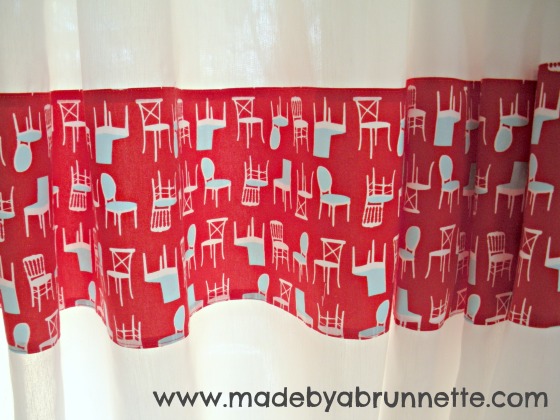
One of my first loves has always been architecture and interior design, so this fabric is perfect for me!
So, there you are… the grand tour of my sewing/quilting studio! I hope you enjoyed it.





















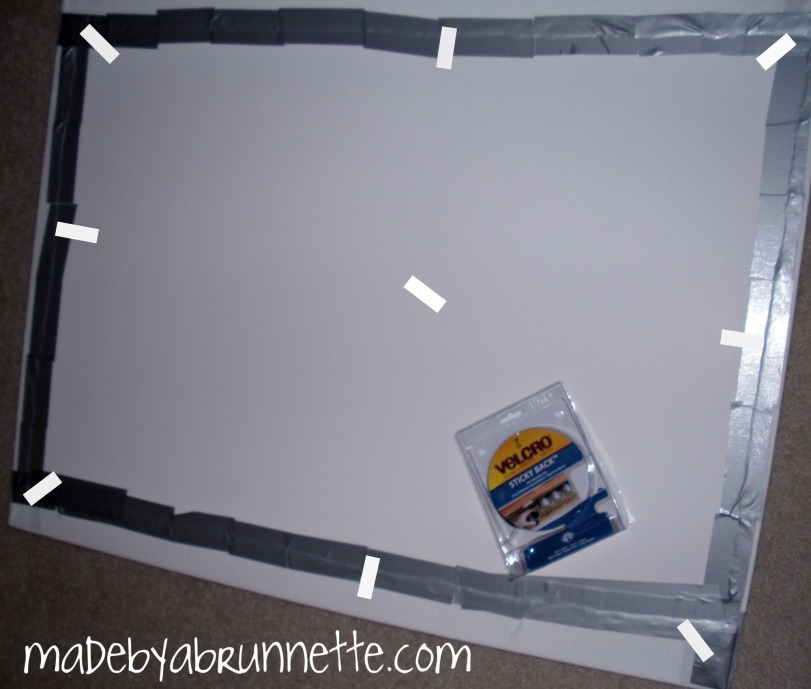
 I decided pretty quickly that I was going to need more than one, that wall space to the left of the door is just the right size for a second board… so… before long I had a second board hung and was making good use of it:
I decided pretty quickly that I was going to need more than one, that wall space to the left of the door is just the right size for a second board… so… before long I had a second board hung and was making good use of it:


























